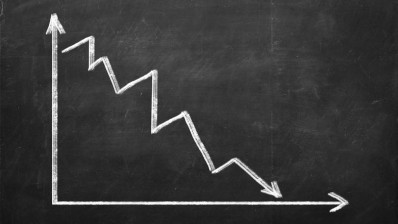US agribusiness backs NAFTA deal renegotiation: Purdue University

Agricultural producers’ sentiment was unchanged in May from a month earlier. The latest reading of the Purdue University/CME Group Ag Economy Barometer – which is based on a monthly survey of 400 agricultural producers from across the country – was 130. The producer sentiment index has hovered near 130 for five of the last six months and remains considerably stronger than both last fall and a year ago.
The May report, released Tuesday, showed producers’ forward-looking expectations, as measured by the Index of Future Expectations, improved modestly to 136. This was the second month in a row that this index increased. Conversely, the Index of Current Conditions fell to 117, a 10-point decline from its April reading. Similar to the broad Ag Economy Barometer, both sub-indices are substantially higher than a year ago, indicating producers are more optimistic about current conditions and in their expectations for the future, according to the publication.
Concerns over current conditions may relate to the fact that farmers are shifting from the spring planting period to the growing period, said David Widmar, research associate with the department of agricultural economics at Purdue University.
The planting season has been a difficult one with wet weather and flooding causing planting delays and potentially some acres to be replanted in parts of the country while feed crop producers in other regions faced overly dry weather, he said.
However, those challenges may not be the only factor underlying the drop in producer sentiment for the present period, he told FeedNavigator. “It’s really hard to capture where we are today, [or] what drove a month-to-month change,” he added.
“It’s not to say specifically that’s the change, but it’s something that they face – producers are wrapping up field work, they’ve laid their plans, the budget didn’t look that great, the planting season hasn’t been particularly easy,” he said. “For the livestock producers as well, this is the time of year when things start to change a lot – feed prices start to adjust, hay prices get settled.”
Trade and NAFTA
This month’s report also sought to understand producers’ thoughts on the announced renegotiation of NAFTA, said Widmar. The questions were part of a larger process exploring elements of the overall producer sentiment jump seen after November.
“We’re trying to understand where producer sentiment is today and the post-November jump,” he said. “We asked earlier about regulatory environment, and found producers think that trade is very important to the sector.”
Of the 400 producers asked about NAFTA, 83% said they were in favor of the trade deal that covers the US, Canada and Mexico being renegotiated, reported the barometer. About 17% of respondents said they were opposed to the idea.
Additionally, 63% said they expected the outcome to be positive for the US economy, while 61% thought it would be positive for ag producers, said Widmar. And, about 25% thought that the outcome would be neutral or neither favorable or unfavorable.
Overall, the responses suggested that more than 80% of producers both supported the renegotiation and thought it would have a favorable or neutral outcome for agricultural and feed crop producers, he said.
“This is why we’re doing this activity,” Widmar said. “It’s unequivocal that producer sentiment in the last six months is different than it was in 2016 – [even with] tough budgets and commodity prices that are still below breakeven, producers are more optimistic based on future expectations.”
Longer perspective
The survey also provided a longer-term look at thoughts on farmland prices, said Widmar. “We’ve been watching that question and we’re trying to understand how that fits is it a leading indicator or a lagging indicator,” he added.
In the short term, the range between producers who considered that values would be better in a year and those who thought they would be worse in a year, tightened, the survey reported. About 19% of respondents thought that values would improve in a year while 30% thought they would decline – but that response is more favorable than it has been since July 2016.
Looking longer term, the majority of respondents thought that values would be the same or improved in five years, said Widmar. Among respondents about 40% thought prices would increase, and 44% thought they would be about the same.
“Farmland values are heavily driven by the health of the farm economy,” he said. “We think this is an important measure – we think it starts to underpin why we saw the index of future expectation so much higher in recent months.”
“Even when we’re in a slowdown and dip in farmland prices, and commodity prices, and tough time for producers they see optimism looking ahead,” he added.












